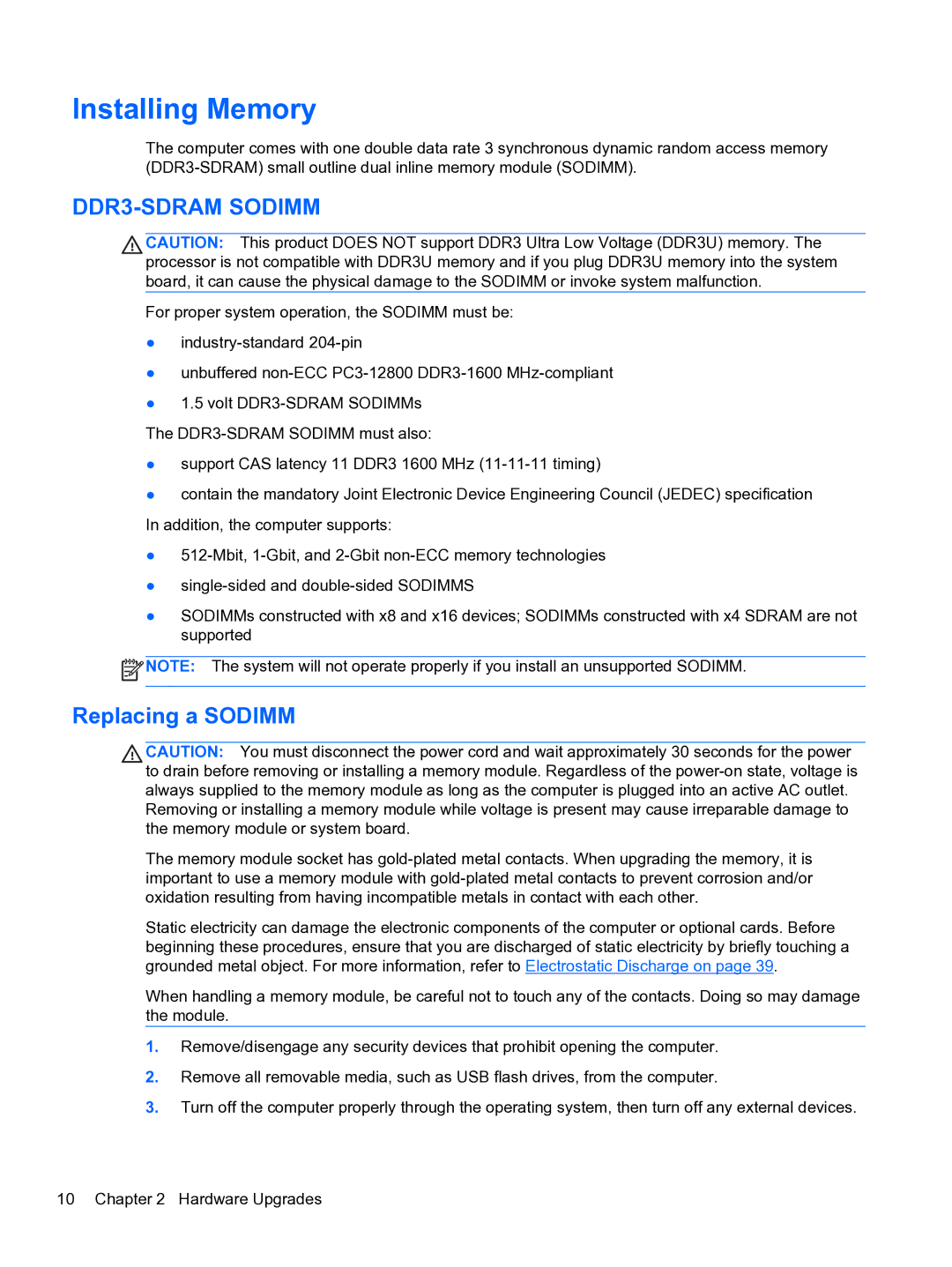
Installing Memory
The computer comes with one double data rate 3 synchronous dynamic random access memory
DDR3-SDRAM SODIMM
![]() CAUTION: This product DOES NOT support DDR3 Ultra Low Voltage (DDR3U) memory. The processor is not compatible with DDR3U memory and if you plug DDR3U memory into the system board, it can cause the physical damage to the SODIMM or invoke system malfunction.
CAUTION: This product DOES NOT support DDR3 Ultra Low Voltage (DDR3U) memory. The processor is not compatible with DDR3U memory and if you plug DDR3U memory into the system board, it can cause the physical damage to the SODIMM or invoke system malfunction.
For proper system operation, the SODIMM must be:
●
●unbuffered
●1.5 volt
The
●support CAS latency 11 DDR3 1600 MHz
●contain the mandatory Joint Electronic Device Engineering Council (JEDEC) specification In addition, the computer supports:
●
●
●SODIMMs constructed with x8 and x16 devices; SODIMMs constructed with x4 SDRAM are not supported
![]() NOTE: The system will not operate properly if you install an unsupported SODIMM.
NOTE: The system will not operate properly if you install an unsupported SODIMM.
Replacing a SODIMM
CAUTION: You must disconnect the power cord and wait approximately 30 seconds for the power to drain before removing or installing a memory module. Regardless of the
Removing or installing a memory module while voltage is present may cause irreparable damage to the memory module or system board.
The memory module socket has
Static electricity can damage the electronic components of the computer or optional cards. Before beginning these procedures, ensure that you are discharged of static electricity by briefly touching a grounded metal object. For more information, refer to Electrostatic Discharge on page 39.
When handling a memory module, be careful not to touch any of the contacts. Doing so may damage the module.
1.Remove/disengage any security devices that prohibit opening the computer.
2.Remove all removable media, such as USB flash drives, from the computer.
3.Turn off the computer properly through the operating system, then turn off any external devices.
10 Chapter 2 Hardware Upgrades
